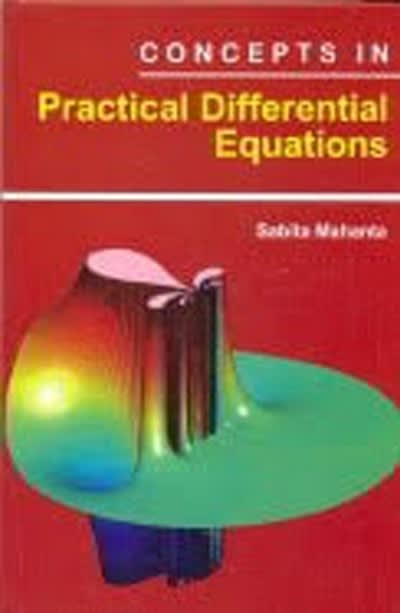Question
Question: A researcher wants to test whether production errors differ by time of day (Day, Evening, and Nigh shift). She randomly assigns a group of
Question:
A researcher wants to test whether production errors differ by time of day (Day, Evening, and Nigh shift). She randomly assigns a group of accountants to each of three different shifts and measures the number of errors they make per month. She obtains the following results:
Test for a difference at ? = .05
Day
?X = 11
?2 =23
n = 6
Evening
?X=27
?2=163
n = 6
Night
?X=36?
?2=273
n = 6
STEP 1: State the null and alternative hypotheses. (2 points)
STEP 2: Set up the criteria for making a decision. That is, find the critical value.(1 point)
STEP 3: Compute the appropriate test-statistic. Show your work! (12 points)
(I have computed SStot for you)
Rows: Source Between Within Total
Columns: SS df MS F
SS of within: 101.3
STEP 4: Evaluate the null hypothesis (based on your answers to the above steps).(1 point)
STEP 5: Based on your evaluation of the null hypothesis, what is your conclusion?(1point)
A. Based on your decision about the null in the previous problem, is it appropriate to conduct a post-hoc test? (1 point)
B. Calculate the magnitude of effect for the p
A researcher wants to test whether production errors differ by time of day (Day, Evening, and Nigh shift). She randomly assigns a group of accountants to each of three different shifts and measures the number of errors they make per month. She obtains the following results:
Test for a difference at ? = .05
Day
?X = 11
?2 =23
n = 6
Evening
?X=27
?2=163
n = 6
Night
?X=36?
?2=273
n = 6
STEP 1: State the null and alternative hypotheses. (2 points)
STEP 2: Set up the criteria for making a decision. That is, find the critical value.(1 point)
STEP 3: Compute the appropriate test-statistic. Show your work! (12 points)
(I have computed SStot for you)
Rows: Source Between Within Total
Columns: SS df MS F
SS of within: 101.3
STEP 4: Evaluate the null hypothesis (based on your answers to the above steps).(1 point)
STEP 5: Based on your evaluation of the null hypothesis, what is your conclusion?(1point)
A. Based on your decision about the null in the previous problem, is it appropriate to conduct a post-hoc test? (1 point)
Question:revious problem and interpret what it means. (2 points)





Step by Step Solution
There are 3 Steps involved in it
Step: 1

Get Instant Access to Expert-Tailored Solutions
See step-by-step solutions with expert insights and AI powered tools for academic success
Step: 2

Step: 3

Ace Your Homework with AI
Get the answers you need in no time with our AI-driven, step-by-step assistance
Get Started


